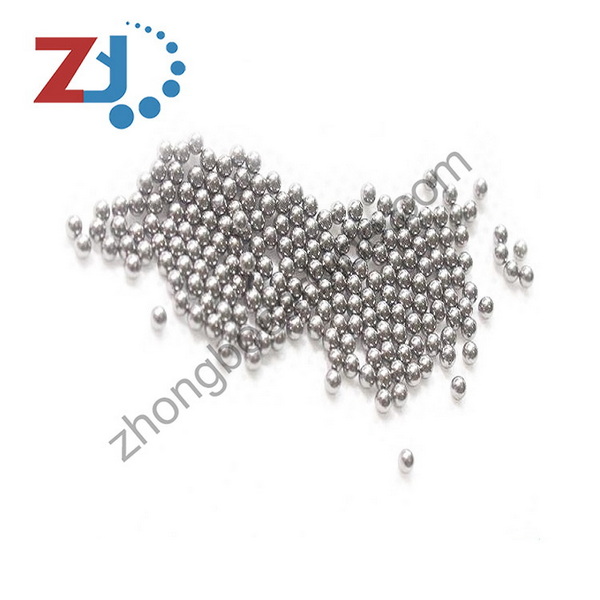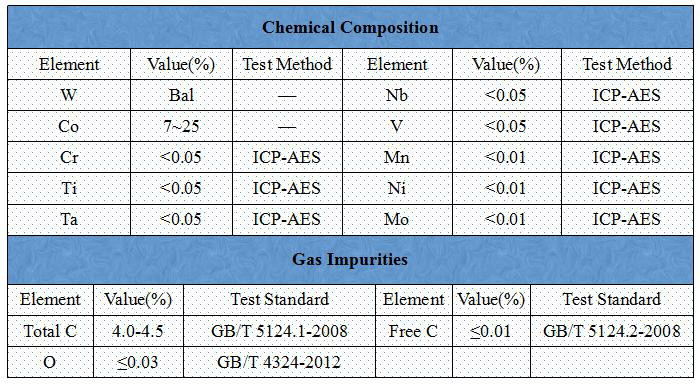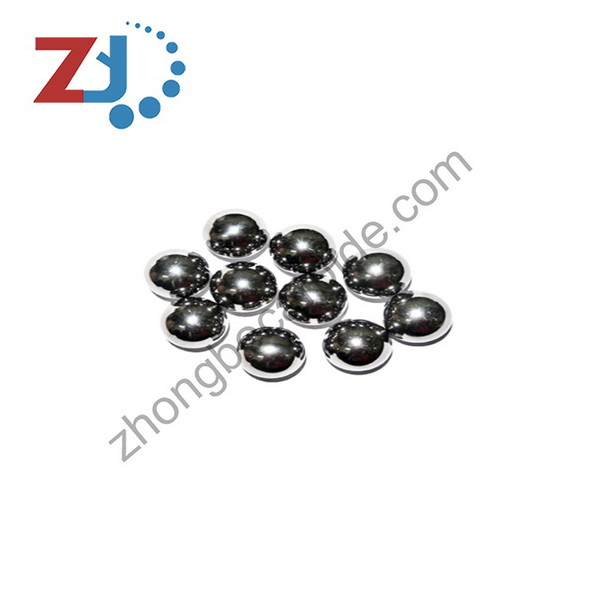Content Menu
● Introduction
● Composition and Properties of Tungsten Carbide
>> Role of the Binder
>> Key Properties Influenced by Grade
● Classification of Tungsten Carbide Grades
>> ISO Classification
>> C Grades
>> Proprietary Grades
● Factors Influencing Grade Selection
>> Workpiece Material
>> Machining Conditions
>> Tool Geometry
>> Cost Considerations
● Applications of Different Tungsten Carbide Grades
>> Cutting Tools
>> Wear Parts
>> Dies and Molds
>> Other Applications
● Advanced Tungsten Carbide Grades and Coatings
>> Nano-grained Tungsten Carbide
>> Coated Tungsten Carbide
● Conclusion
● FAQ: Frequently Asked Questions About Tungsten Carbide Grades
>> 1. What is the primary difference between P, M, and K grades of tungsten carbide?
>> 2. How does the cobalt binder content affect the properties of tungsten carbide?
>> 3. What are some typical applications for nano-grained tungsten carbide?
>> 4. Can tungsten carbide be used in high-temperature applications?
>> 5. How do coatings enhance the performance of tungsten carbide tools?
● Citations:
Introduction
Tungsten carbide is a versatile composite material prized for its exceptional hardness, wear resistance, and durability[2][8]. It's a staple in numerous industries, from aerospace to mining, where high-performance tools and components are essential[1][2][3]. Often referred to as cemented carbide, it is manufactured through powder metallurgy, combining tungsten carbide particles with a metallic binder[8]. The characteristics of tungsten carbide can be tailored by varying the composition and grain size, leading to a wide array of grades, each optimized for specific applications[5]. Understanding these different grades is crucial for selecting the right material for a particular task, ensuring optimal performance and longevity. This article explores the various grades of tungsten carbide, their properties, applications, and the factors influencing their selection.

Composition and Properties of Tungsten Carbide
Role of the Binder
The metallic binder plays a crucial role in the properties of tungsten carbide. Cobalt is the most common binder due to its excellent wetting and bonding characteristics with tungsten carbide particles[5]. The binder provides toughness and strength to the composite, allowing it to withstand high stress and impact[5]. Other metals, such as nickel, chromium, and molybdenum, may also be used as binders, either alone or in combination, to achieve specific properties[5].
Key Properties Influenced by Grade
The grade of tungsten carbide significantly influences its key properties:
- Hardness: The hardness of tungsten carbide is primarily determined by the grain size and the proportion of the tungsten carbide phase[1]. Finer grain sizes and higher tungsten carbide content result in higher hardness[1].
- Toughness: The binder content and type affect the toughness of tungsten carbide[5]. Higher binder content generally increases toughness but may reduce hardness[5].
- Wear Resistance: Wear resistance is influenced by both hardness and toughness[3]. A balance between these properties is essential for optimal wear performance in different applications[3].
- Density: The density of tungsten carbide varies with the composition, typically ranging from 13.0 to 15.5 g/cm3[1].
- Transverse Rupture Strength (TRS): TRS measures the bending strength of the material and is affected by the grain size, binder content, and the presence of defects[1].
Classification of Tungsten Carbide Grades
ISO Classification
The International Organization for Standardization (ISO) provides a classification system for tungsten carbide grades based on their intended applications. This system categorizes grades into three main groups:
- P Grades: For machining long-chipping materials such as steel[1].
- M Grades: For machining steel, stainless steel, and cast iron[1].
- K Grades: For machining short-chipping materials such as cast iron and non-ferrous metals[1].
Each category includes a range of grades with varying properties to suit different machining conditions and workpiece materials.
C Grades
The "C" designation was originally conceived to rate tungsten carbides according to the job they had to perform[9]. If a user had a particular job, they could specify a "C" grade of tungsten carbide and purchase from any supplier[9]. However, this has led to a situation where a C-7 tungsten carbide can vary widely in composition and performance[9]. According to Machinery's Handbook, it can range from 0-75% tungsten carbide, 8-80% titanium tungsten carbide, 0-10% Cobalt, and 0-15% Nickel[9].
The C grades are broadly classified as follows[9]:
- C-1 to C-4: General grades for cast iron, non-ferrous, and non-metallic materials.
- C-5 to C-8: For steel and steel alloys, offering resistance to pitting and deformation.
- C-9 to C-11: Wear surface grades with varying degrees of shock resistance.
- C-12 to C-14: Impact grades with different levels of impact resistance.
- C-15 to C-19: Miscellaneous grades for specific applications such as weld removal, rock bits, and radioactive shielding.
Proprietary Grades
Many tungsten carbide manufacturers offer proprietary grades tailored to specific applications or industries[5]. These grades may have unique compositions, microstructures, or coatings that enhance their performance in particular conditions[5]. Examples of manufacturers that offer tungsten carbide grades are CB-Ceratizit and Hyperion Materials & Technologies[1][5].
Factors Influencing Grade Selection
Workpiece Material
The material being machined or processed is a primary factor in selecting the appropriate tungsten carbide grade[1]. Different materials have varying hardness, abrasiveness, and machining characteristics that require specific carbide properties[1].
Machining Conditions
The machining conditions, such as cutting speed, feed rate, depth of cut, and coolant use, also influence grade selection[1]. High-speed machining may require a grade with high hardness and wear resistance, while interrupted cutting may necessitate a tougher grade[1].
Tool Geometry
The geometry of the cutting tool or wear component can affect the stresses and forces acting on the carbide, influencing the required grade[7]. Complex tool geometries may require a tougher grade to resist fracture[7].
Cost Considerations
The cost of different tungsten carbide grades can vary significantly[9]. While higher-performance grades may offer superior results, they may also be more expensive. Balancing performance requirements with cost considerations is essential in grade selection[9].

Applications of Different Tungsten Carbide Grades
Cutting Tools
Tungsten carbide is widely used in cutting tools for machining various materials[2]. Different grades are optimized for specific cutting applications[2].
- Fine-grained grades: Used for precision cutting of hardened steel and abrasive materials[1].
- Medium-grained grades: Suitable for general-purpose machining of steel, cast iron, and non-ferrous metals[1].
- Coarse-grained grades: Used for heavy-duty cutting and machining of abrasive materials under high-impact conditions[1].
Wear Parts
Tungsten carbide is also used in wear parts that are subjected to abrasive, erosive, or corrosive conditions[3].
- High-hardness grades: Used for wear parts in abrasive environments, such as mining, construction, and agriculture[3].
- Corrosion-resistant grades: Used for wear parts in corrosive environments, such as chemical processing and marine applications[3].
- High-toughness grades: Used for wear parts subjected to high-impact loads, such as rock drilling and crushing[3].
Dies and Molds
Tungsten carbide is used in dies and molds for forming and shaping materials[7].
- High-hardness grades: Used for dies and molds that require high precision and wear resistance, such as those used in powder metallurgy and ceramic forming[7].
- High-toughness grades: Used for dies and molds that are subjected to high stresses and impacts, such as those used in metal forging and die casting[7].
Other Applications
Tungsten carbide finds applications in various other industries due to its unique properties[2].
- Aerospace: Used in turbine blades, compressor seals, and landing gear components[3].
- Oil and Gas: Used in drill bits, valve stems, and pump components[3].
- Electronics: Used in integrated circuits, semiconductors, and X-ray tubes[2].
- Military: Used in kinetic energy penetrators and dense inert metal explosives[2].
- Jewelry: Used in rings and other jewelry items due to its durability and scratch resistance[2].
Advanced Tungsten Carbide Grades and Coatings
Nano-grained Tungsten Carbide
Nano-grained tungsten carbide is a relatively new class of materials with ultra-fine grain sizes (typically less than 100 nm)[1]. These materials exhibit enhanced hardness, strength, and wear resistance compared to conventional tungsten carbide grades[1]. Nano-grained tungsten carbide is used in high-performance cutting tools, wear parts, and other advanced applications[1].
Coated Tungsten Carbide
Coating tungsten carbide tools and components with thin layers of materials such as titanium nitride (TiN), titanium carbonitride (TiCN), or aluminum oxide (Al2O3) can further enhance their performance[3]. Coatings can improve hardness, wear resistance, and chemical inertness, extending the life of the tool or component[3].
Conclusion
Tungsten carbide is a remarkable material with a wide range of applications, owing to its exceptional hardness, wear resistance, and versatility. The availability of different grades allows engineers and manufacturers to select the optimal material for their specific needs, ensuring high performance and durability. Understanding the composition, properties, and applications of various tungsten carbide grades is crucial for maximizing the benefits of this material in diverse industries. As technology advances, ongoing research and development efforts continue to produce new and improved tungsten carbide grades and coatings, further expanding the possibilities for this essential engineering material.

FAQ: Frequently Asked Questions About Tungsten Carbide Grades
1. What is the primary difference between P, M, and K grades of tungsten carbide?
P grades are designed for machining long-chipping materials like steel, M grades are for steel, stainless steel, and cast iron, while K grades are best for short-chipping materials like cast iron and non-ferrous metals[1].
2. How does the cobalt binder content affect the properties of tungsten carbide?
Higher cobalt content generally increases the toughness and strength of tungsten carbide but may reduce its hardness and wear resistance[5].
3. What are some typical applications for nano-grained tungsten carbide?
Nano-grained tungsten carbide is used in high-performance cutting tools, wear parts, and other advanced applications where enhanced hardness, strength, and wear resistance are required[1].
4. Can tungsten carbide be used in high-temperature applications?
Yes, tungsten carbide has a high melting point and can retain its strength and hardness at elevated temperatures, making it suitable for applications such as jet engine components and rocket nozzles[2][6].
5. How do coatings enhance the performance of tungsten carbide tools?
Coatings like titanium nitride (TiN) and aluminum oxide (Al2O3) can improve the hardness, wear resistance, and chemical inertness of tungsten carbide tools, extending their lifespan and performance[3].
Citations:
[1] https://www.cbceratizit.com/en/product-566387/Tungsten-Carbide-Grade.html
[2] https://shop.machinemfg.com/understanding-tungsten-properties-applications-and-stability/
[3] https://www.linde-amt.com/resource-library/articles/tungsten-carbide
[4] https://www.imetra.com/tungsten-carbide-material-properties/
[5] https://www.hyperionmt.com/en/products/Carbide-Rolls/grade-data/
[6] https://www.refractorymetal.org/tungsten-carbide-uses-properties.html
[7] https://www.allied-material.co.jp/en/techinfo/tungsten_carbide/use.html
[8] https://generalcarbide.com/grades/
[9] https://carbideprocessors.com/pages/carbide-parts/tungsten-carbide-grades.html
















